With next-generation technology appearing in more and more parts of water resource recovery facilities, a new partnership in Maryland is considering an interesting question: Can implementing technology directly in retention ponds and other control features lead to more effective stormwater management?
Making retention ponds smarter
Typical stormwater retention ponds accept large volumes of water during heavy storms and drain it at a controlled pace that discourages local flooding and nourishes groundwater aquifers. However, achieving the most benefit from retention ponds requires operators to know when and how much precipitation is expected, the correct drainage rates to prevent both flooding and pond overflow, and how to put this information to work quickly during potentially extreme and sudden downpours.
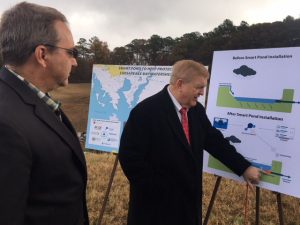
Announcing a new partnership in November, Maryland Department of Transportation (MDOT) Secretary Pete K. Rahn discusses the smart pond concept with state delegate Johnny Mautz. MDOT will invest $4 million to retrofit retention ponds on land owned by Walmart (Bentonville, Ark.) with continuous monitoring and adaptive control technology. Photo courtesy of MDOT.
A continuous monitoring and adaptive control system developed by Opti (Boston), also known as a smart pond, takes the guesswork out of retention pond operation. By outfitting stormwater ponds with sensors, the smart pond software constantly monitors water levels and remaining storage volumes.
The internet-enabled system also receives up-to-the-minute weather forecasts. When expecting rain, the system automatically opens valves at the bottom of the pond to a degree that minimizes flood risks while maximizing retention time. Longer retention times increase water quality by enabling the pond to capture more sediment and nutrients before draining the runoff.
Operators also can manually tune the system from any smartphone, computer, or other internet-capable device.
Bridging the public-private divide
This project represents of a first-of-its-kind partnership between the Maryland state government, conservation groups, and the private sector.
In November, the Maryland Department of Transportation (MDOT) announced that it would invest $4 million in 2020 to retrofit a pilot-sized group of retention ponds with the system. Because the U.S. Environmental Protection Agency (EPA) estimates that there are approximately 65,000 privately owned stormwater ponds in the U.S., MDOT wanted to demonstrate the potential of working with the private sector to improve stormwater management. So, the Maryland Department of the Environment (MDE) and the Maryland Environmental Service (MES) approached Walmart (Bentonville, Ark.) with the idea to install smart pond technology in retention ponds near four Walmart parking lots in Maryland.
“This is an exciting opportunity to demonstrate how public-private partnerships can be used to advance long-term environmental preservation goals, and in particular to help protect the Chesapeake Bay,” said Roy McGrath, director of MES, in a release.
Walmart Director of Environmental, Health, and Safety Compliance Rich Dailey added that the multinational retail chain is excited to use its assets “to help solve the problems posed by non-point source runoff.”
The terms of MDOT’s investment fall in line with a state stormwater credit trading program established by MDE in early 2019. MDOT’s $4 million will purchase 40 ha (100 ac) of stormwater management credits generated by the smart retention ponds – signaling the first-ever credit purchase in the U.S. from a state transportation agency, according to the MDOT release.
That’s about $93,750 per ha ($37,500 per ac), according to MDOT. By comparison, the cost of building new stormwater infrastructure such as swales, bioretention cells, and new stormwater ponds is usually about $375,000 per ha ($150,000 per ac), not including ongoing operations and maintenance, the agency described.
A smarter stormwater standard
Opti and partners from The Nature Conservancy (Arlington, Va.) are scheduled to design, build, and implement the new smart pond systems by November 2020. After installation, MES will monitor the performance of the improved retention ponds and quantify that performance into credits. As part of the agreement, Opti and The Nature Conservancy also will support operations, inspection, and maintenance costs for 20 years.
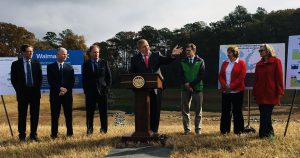
MDOT’s investment in the smart pond pilot represents the first time in the U.S. that a state transportation agency has participated in a stormwater credit trading program. Pilot stakeholders, who attended a presentation about the initiative in November, include MDOT, the Maryland Department of the Environment, the Maryland Environmental Service, Walmart, Opti, and The Nature Conservancy (Arlington, Va.). Photo courtesy of MDOT.
Purchasing the credits will help MDOT’s State Highway Administration comply with its goal to treat nearly 2,000 ha (5,000 ac) of impervious area along Maryland highways by the end of 2020, according to the release. Pollutants produced on highways such as motor oil, tire rubber, and litter collect on roadway edges and are swept by stormwater runoff into waterways that eventually reach the Chesapeake Bay. Each of the four Walmart locations chosen for the pilot are situated near Maryland highways, making them ideal targets for new runoff mitigation strategies.
Pending a successful pilot, MDOT says it hopes to roll out the technology to more of its 800 stormwater ponds across the state, while representatives from Walmart and The Nature Conservancy indicated that they are examining ways to widen the reach of smart pond trials around the country.
“This project is a perfect example of what the Chesapeake Bay needs: public and private sectors working together to harness technologies that deliver low-cost solutions to water pollution that can be replicated across the Bay watershed and beyond,” said Mark Bryer, director of The Nature Conservancy’s Chesapeake Bay program.
Visit the MDOT website for more information about how the smart pond concept can simplify retention pond operation.

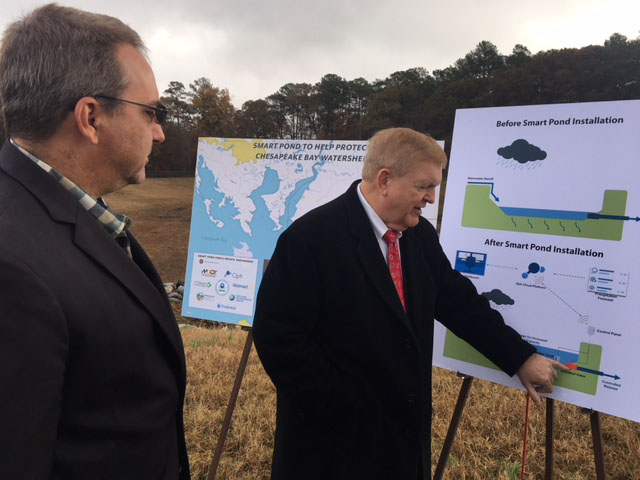

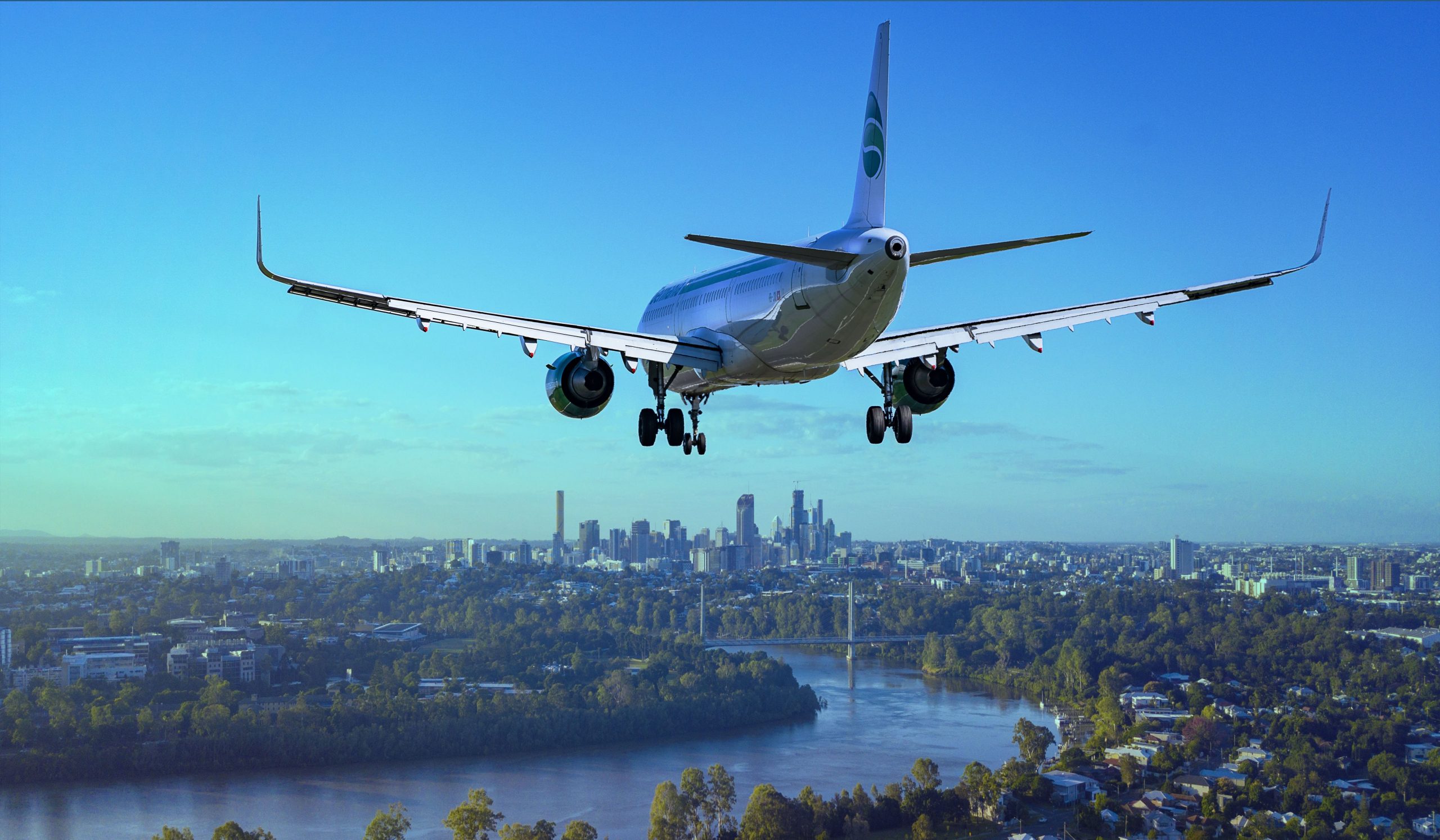
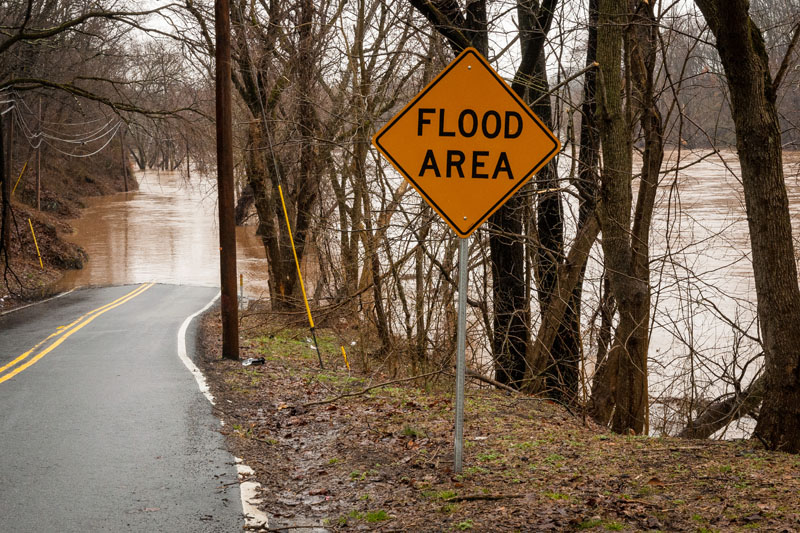












Are these smart ponds protective of stream channel stability? Given that the majority of stormwater ponds release water at a rate above channel forming flow if these new and improved structures are just for water quality their outflows may be cleaner but they will still lead to erosion and down cutting of the receiving streams.
@David Rutter You are thinking of a detention pond and these are referring to retention ponds. Retention ponds are not designed to release detained volumes, they are expected to return water through infiltration and evapotranspiration.
Opti is able to manage the speed of the valve opening, % open of the valve, and the volume distributed from the pond thru our actuated valve. We are very sensitive to stream energy and what that can do in eroding a stream as well as destroying the food source for fish et al. It is critical that we improve environmental outcomes, so these items are factored into our software and machine learning. thank you.